#pamela brown
Text


Dracula (1974) - French program
#dracula 1974#jack palance#simon ward#nigel davenport#pamela brown#1974#1970s movies#dan curtis#tv movie#horror#program
82 notes
·
View notes
Photo








I Know Where I'm Going! (Michael Powell & Emeric Pressburger, 1945)
#films watched in 2023#I Know Where I'm Going!#I Know Where I'm Going#siete#1945#Michael Powell#Emeric Pressburger#Pressburger#Powell#michael powell and emeric pressburger#Powell & Pressburger#powell and pressburger#Wendy Hiller#Roger Livesey#Finlay Currie#Pamela Brown#drama#love#back#animals#dogs#black and white#faceless#sea#water#hands#smoke#jewellery
92 notes
·
View notes
Text

pamela brown as lady macbeth, bristol old vic, 1946
📸 by john vickers
9 notes
·
View notes
Text


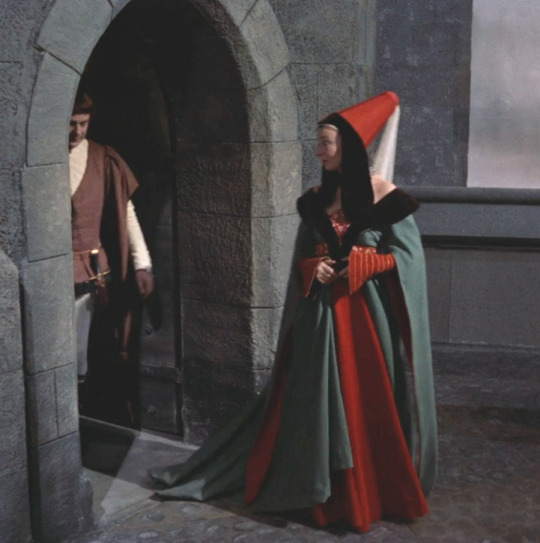


One Dress a Day Challenge
Multicolored August
Richard III / Pamela Brown as Jane Shore
Jane Shore, the king's mistress, doesn't have many lines, but she's on the edges of so many scenes, hovering in the background and looking enigmatic. This costume and Pamela Brown's performance make her memorable. I'm sure they were indulging in a bit of symbolism with the gown, which is a respectable blue-grey on the outside and lined with flashes of bright scarlet! If that doesn't drive the point home enough, they put the queen in white, although they inexplicably also put her in the style of the previous century.
This was one of my dad's favorite movies. He used to like to say, "How now, my hearty stout resolvèd mates?" when he was feeling jocular.
#richard iii#multicolored august#multicoloured august#pamela brown#jane shore#one dress a day challenge#one dress a week challenge#movie costumes#period film#15th century#15th century fashion#medieval costume#1480s#shakespeare costumes#1955 films#1955 movies#shakespeare adaptations#shakespeare on film
94 notes
·
View notes
Text

#the tales of hoffmann#Moira Shearer#Robert Helpmann#Léonide Massine#Robert Rounseville#Pamela Brown#Ludmilla Tchérina#Ann Ayars#Michael Powell#Emeric Pressburger#1951
9 notes
·
View notes
Photo

#richard burton#peter o'toole#movie poster#john gielgud#pamela brown#edward anhalt#peter glenville#movies#poster#becket
16 notes
·
View notes
Photo






Secret Ceremony | Joseph Losey | 1968
Elizabeth Taylor, Peggy Ashcroft, Pamela Brown
32 notes
·
View notes
Photo

I Know Where I’m Going! (1945)
If not for World War II, Michael Powell and Emeric Pressburger might not have made I Know Where I’m Going! Looking to film a high-concept Technicolor feature that eventually became A Matter of Life and Death (1946; AKA Stairway to Heaven), the duo encountered trouble when they learned that almost every Technicolor camera in non-occupied Western Europe was being used to make Allied military training films. So while biding their time, they looked to film a story that Pressburger pounded out on his typewriter in four days. Originally known as The Misty Island, I Know Where I’m Going! is a poignant romance containing dollops of comedy, Scottish folklore, and traces of adventure. Aided by the misty oceanic landscapes and two subtle (but worthy) central performances, this movie from the Archers (the production company for Powell and Pressburger, but also a nickname for the two) balances its earthiness and mysticism to form an effective romantic drama.
After a narrated prologue/opening credits fast forwarding through the first twenty-five years of her life, the Mancunian woman Joan Webster (Wendy Hiller) departs home to the Hebrides in order to marry industrialist Sir Robert Bellinger (voiced by Norman Shelley). Joan has never met the much older Sir Bellinger, who lives on the fictional Isle of Kiloran. A multipart journey involving trains and boats takes place – all on time, exactly as Sir Bellinger’s travel itinerary has laid out for Joan. Following a fascinating montage travel scene thanks to editor John Seabourne, Sr. (1943’s The Life and Death of Colonel Blimp, 1957’s A King in New York), Joan arrives at her final stop before the boat to Kiloran – the Isle of Mull. There, Joan finally has a delay in her travel schedule. Inclement weather for the next few days will make passage impossible. There, she meets Royal Navy officer Torquil MacNeil (Roger Livesey), who is on leave from the service. The two stay the night at a friend of Torquil’s, Catriona Potts (Pamela Brown), and her overeager Irish Wolfhounds. Joan soon learns that Torquil is the Laird of Kiloran and – with the poor conditions not improving – he gladly shows Joan many of the locals and sights. Gradually, Joan’s emotional walls crumble, leaving her making a choice unanticipated and uncharacteristic.
The colorful cast of supporting actors include C.W.R. Knight as the falconer Colonel Barnstaple, Finlay Currie as the sailor Ruairidh Mhór, George Carney as Joan’s father, Nancy Price as Mrs. Crozier, and Catherine Lacey as the busybody Mrs. Robinson. Thirteen-year-old Petula Clark is Cheril, the Robinsons’ daughter.
youtube
How in the world did Pressburger type out this screenplay (the writing credit also goes to Powell) in a few days? The Archers came into pre-production knowing what sort of story they wished to tell. Intending to carry over the anti-materialist messages from their previous film – 1944’s A Canterbury Tale – they juxtapose constantly the idea of Joan’s idea of marrying a rich husband with the poor and working-class background of the Isle of Mull’s residents. The origins of Joan’s affluent tastes, established in the opening sequence over the opening credits, are never fully explained. Is it a legacy of living in extremely class-conscious early 20th century England? Perhaps a coping mechanism or compensating for some personal shortcoming? Whatever it is, it makes Joan’s progression as a character and the climactic decisions of the film feel less believable than they should be. This is, for me, the glaring hole in an otherwise fine screenplay from the Archers. The superb performances from Hiller and Livesey almost remedy my qualms here.
And what performances they deliver. Wendy Hiller had been primarily a stage actress by the time she made a leap into the movies. The second film she made was the 1938 adaptation of George Bernard Shaw’s Pygmalion, in which she played Eliza Doolittle. She became the first British actress to receive an Academy Award acting nomination in a British movie as a result. With her stock on the rise and looking forward to working with her, Powell and Pressburger signed her up to play the female lead in The Life and Death of Colonel Blimp. But her second pregnancy forced her to step away from the production, leaving that role to Deborah Kerr. In I Know Where I’m Going!, Hiller has to exercise restraint for almost all of this film. As much as I criticized the on-paper believability of the Joan and Torquil’s developing relationship in the preceding paragraph, Hiller does her darndest to sell it. Her initial indifference to Scotland’s charms wears down as she contemplates her situation and begins to accept the slower pace of life far from the comfortable trappings of middle-class Manchester.
It takes a second performance to make all this work, and Roger Livesey does so ably. Livesey is no Laurence Olivier or Leslie Howard in terms of conventional handsomeness, but he terrifically complements Hiller in their moments together. Patient and kind to the Englishwoman who initially thinks little of the people and the places surrounding her, Torquil is no foil to Joan (this is not exactly an attraction of opposites), but their upbringings and views of tradition are markedly different. Livesey portrays this difference well in his vocal inflections and his bemused facial acting. Most viewers might not notice, but despite I Know Where I’m Going! being shot mostly on-location, Livesey never left London during production. Livesey was part of a play in London’s West End, and that production’s producers would not allow him to leave for Scotland to take part in the on-location shooting. So, for any exterior scenes in this film, Hiller is interacting with a body double. Look closer and you will notice that Livesey is always shot in close-up whenever the film’s narrative is outdoors.
By the time Pressburger completed the screenplay and filming began in the second half of 1944, Allied victory in Europe seemed to be drawing near. After several years of war – at times unsure whether the United Kingdom might survive the Axis onslaught – thoughts inevitably turned to what life might be like again once the guns fell silent. British social changes during wartime, whether by popular practice or by Parliamentary law, led the average British person to believe in a postwar society less class-conscious and economically fairer for all. We never see Sir Roger Bellinger in I Know Where I’m Going!, but there are implications he has profited from fueling the Allied war machine. There are other hints that Sir Bellinger is unaware of how his less wealthier neighbors act, that he is lacking the social etiquette and consciousness to interact with anybody outside his stratified circles (see: his manner of speech while speaking over the radio and his overly detailed itinerary for Joan regarding the trip from Manchester to Kiloran).
Meanwhile, the residents on the Isle of Mull are uniformly depicted as free-wheeling, fun-loving, and content with the human companionship and natural beauty – shot beautifully by cinematographer Erwin Hillier, who often was instructed by Powell to suspend shooting if the sky was too clear, and to wait until some clouds dotted the landscape – they have. The war is far from their concerns (the only explicit mention of WWII in the film might be that Torquil is on leave from the Royal Navy), almost as if it was not happening at all. The philosophies driving the violent on continental Europe and those spoken through the halls in Westminster seem as faraway as Shangri-La in Frank Capra’s Lost Horizon (1937). In place of the economics and politics of war, Gaelic dialogue, legends, and song fill the time as the isle’s residents go about their self-sufficient livelihoods.
Though, in terms of chronology, I Know Where I’m Going! takes place during WWII, it feels like the Archers’ first postbellum film. From 49th Parallel (1941) to The Life and Death of Colonel Blimp to the preceding A Canterbury Tale, the duo’s entire filmography by this point was rife with propaganda or propaganda-adjacent work (The Life and Death of Colonel Blimp is an exception, but it is heavily defined by three separate periods of British wartime). Taken in conjunction with Joan’s romantic second-guessing, I Know Where I’m Going! advocates for the needs of the heart from the moment Joan steps foot in Scotland. More broadly, it expresses hope that Britons can hold fast to more egalitarian principles once World War II concludes.
Michael Powell and Emeric Pressburger’s Technicolor expressionism as seen in A Matter of Life and Death, The Red Shoes (1948), and The Tales of Hoffmann (1951) was not yet in evidence. That would come only with greater artistic freedom, British audiences being able to separate their reputations from their earlier wartime work, and greater funds for those later works. The duo’s artistic vision, however, is without question in I Know Where I’m Going! The scene depicting the Corryvreckan whirlpool is stunning visual effects work (inspired by Moses’ parting of the Red Sea in Cecil B. DeMille’s original 1923 silent version of The Ten Commandments), in addition to the expressive lighting and cinematography of the exterior Scottish scenes.
On the other side of the Atlantic, I Know Where I’m Going! was no financial blockbuster, but it was a commercial and critical success in America. Some time after its release, Powell and Pressburger learned that I Know Where I’m Going! was shown to contracted writers at Paramount Pictures to exemplify, “how a perfect screenplay should be constructed.” Now, there might be no such thing as a “perfect” screenplay – and I hardly think I Know Where I’m Going! is close to that conversation if there is one – but it is certainly an inspired choice to teach screenwriters how to structure their narratives, appropriate places for narration, and how to build a relationship between two characters (which still requires some assistance from the actors).
In the years after making I Know Where I’m Going!, Powell deemed the film the “sweetest” he ever made with Pressburger. The down-to-earth humor and affection for the land and its people is always apparent, a quieter work amid the din of a war near its end. Through Joan and Torquil, the Archers express a social ideal unimaginable for many Britons even decades prior to this film’s release. Amid their many other works with war at the forefront, I Know Where I’m Going! lays bare its aspirations of life simply lived, the only sort of life worth living.
My rating: 8/10
^ Based on my personal imdb rating. My interpretation of that ratings system can be found in the “Ratings system” page on my blog (as of July 1, 2020, tumblr is not permitting certain posts with links to appear on tag pages, so I cannot provide the URL).
For more of my reviews tagged “My Movie Odyssey”, check out the tag of the same name on my blog.
#I Know Where I'm Going#I Know Where I'm Going!#Michael Powell#Emeric Pressburger#Powell and Pressburger#The Archers#Wendy Hiller#Roger Livesey#Pamela Brown#Finlay Currie#George Carney#Nancy Price#Catherine Lacey#Erwin Hiller#John Seabourne Sr.#TCM#My Movie Odyssey
10 notes
·
View notes
Video
Lust for Life 1956
“To play is to make believe. I got too involved with Van Gogh. It was really scary because I felt the character was taking over...I never felt that on any other movie."
Kirk Douglas
Born on this day December 9, 1916 – February 5, 2020.
#Lust for Life 1956#1956 biographical film#vincent van gogh#vincente minnelli#kirk douglas#james donald#pamela brown#everett sloane#anthony quinn#1950s#1950s style#1950s films#1950s cinema#1950s hollywood
13 notes
·
View notes
Text

Becket (1964)
directed by Peter Glenville
Peter O'Toole
as King Henry II
Martita Hunt
as Empress Matilda of England
Pamela Brown
as Queen Eleanor
3 notes
·
View notes
Photo



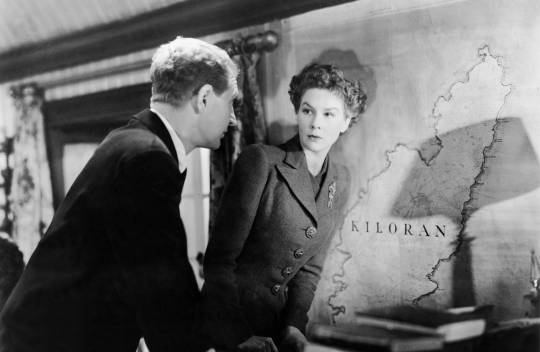



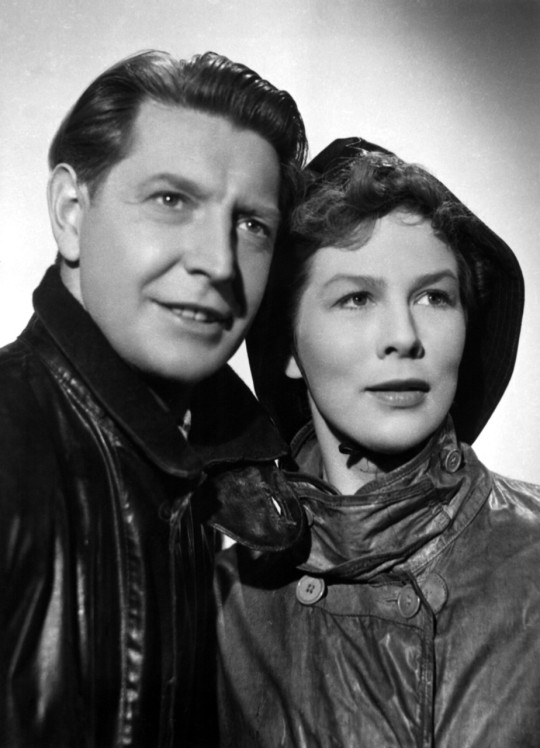
I Know Where I’m Going! (1945) Michael Powell & Emeric Pressburger
May 13th 2023
#i know where i'm going!#1945#michael powell#emeric pressburger#wendy hiller#roger livesey#pamela brown#c.w.r. knight#murdo morrison#margot fitzsimons#finlay currie#george carney#petula clark#john laurie#jean cadell#ikwig#powell and pressburger#the archers
4 notes
·
View notes
Photo
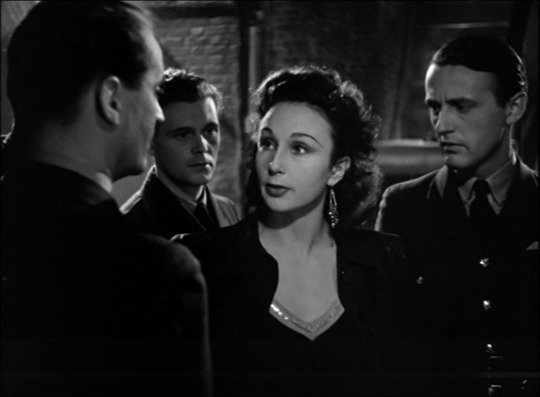



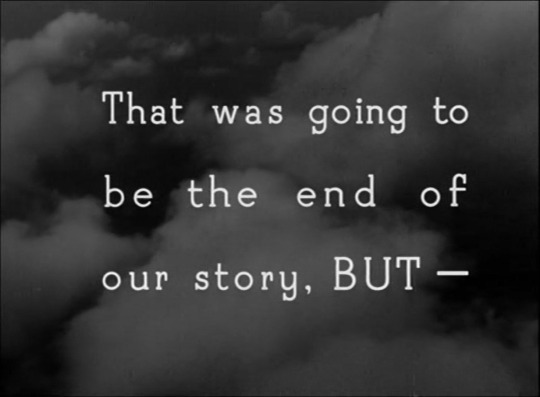


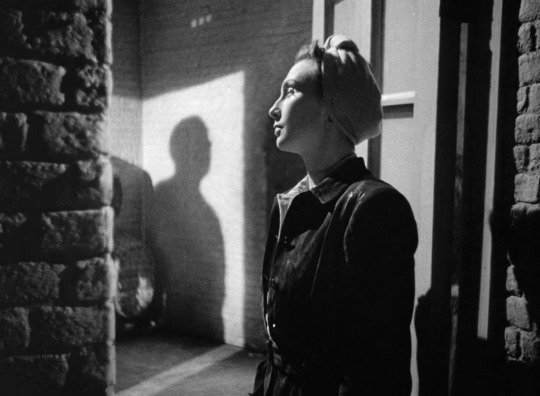
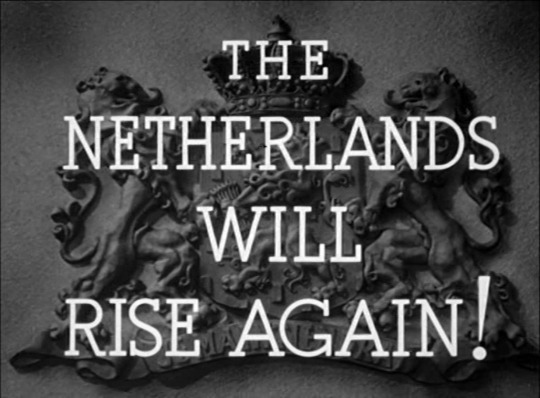
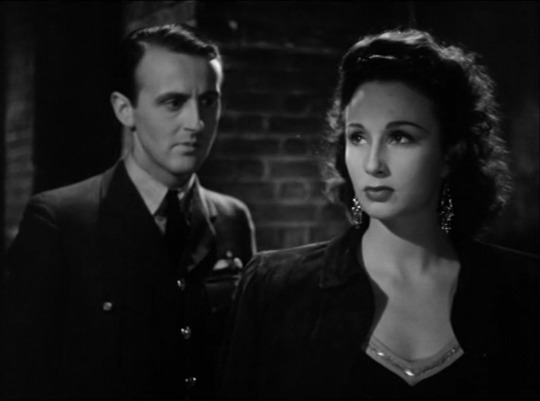
One of Our Aircraft Is Missing is a 1942 British war film, mainly set in the German-occupied Netherlands. It was the fourth collaboration between the British writer-director-producer team of Michael Powell and Emeric Pressburger.
On its way back from a raid on the city of Stuttgart, a British bomber is shot down over Nazi-held Holland. Parachuting into Dutch farmlands under cover of darkness, the six-member crew connects with members of the local resistance, who shelter the Brits from their Nazi inquisitors as they make their way towards freedom.
The film stars Eric Portman, Bernard Miles, Googie Withers, Pamela Brown, Peter Ustinov (in his film debut), Alec Clunes, Hay Petrie, Robert Helpmann, Hugh Williams and Godfrey Tearle.
#eric portman#bernard miles#googie withers#one of our aircraft is missing#1940s#godfrey tearle#hugh williams#robert helpmann#hay petrie#alec clunes#peter ustinov#pamela brown#powell and pressburger#michael powell#old britain#emeric pressburger#holland#the netherlands#ww2#second world war#world war two
0 notes
Text

0 notes
Text
'I Know Where I'm Going!' – love in a stormy paradise on Criterion Channel
Assured, headstrong Joan Webster (Wendy Hiller) knows exactly what she wants and how to get it in I Know Where I’m Going! (1945).
Joan is the epitome of the material girl and she has spent her life seeking an advantageous marriage. But before she can reach the island of Killoran, where a rich fiancée, a lavish wedding, and a loveless marriage await, she’s stranded by fog in a rough, windswept…

View On WordPress
#1945#C.W.R. Knight#Criterion Channel#DVD#Emeric Pressberger#I Know Where I&039;m Going!#Michael Powell#Pamela Brown#Roger Livesay#VOD#Wendy Hiller
1 note
·
View note
Text

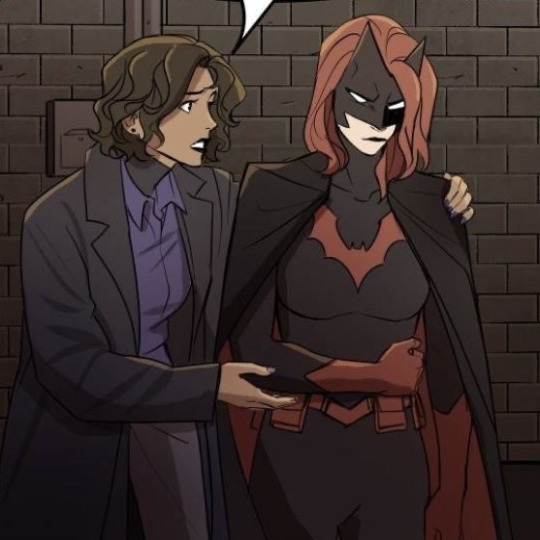


I love them in Wayne Family Adventures
#harley quinn#pamela isley#harlivy#kate kane#renee montoya#kanee#cassandra cain#stephanie brown#stephcass#tim drake#bernard dowd#timber#wayne family adventures#dc comics
229 notes
·
View notes
